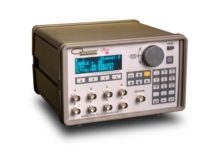On the face of it, it appears that deep learning, smart navigation, and thinking robots have no place in the daily operations of smaller manufacturing companies. Perhaps this explains why so many AI-based machines remain inactive. In truth, these innovations could make even the most traditional production processes more efficient. Organizations already deploying AI systems can expect productivity and revenue gains.
Automatically Detecting Imperfections
Does the component meet the requirements? Is the material intact? Does it have the right measurements? Thanks to a combination of 3D imaging and machine learning, robots are now able to assess the condition of materials. The ‘inspector’ is the brainchild ofBosch APAS. Depending on the model, it inspects either matt or reflective surfaces and can detect minor flaws like blemishes, scratches, and microfractures. The inspector’s ability to learn from image processing allows it to use identified patterns as a benchmark in subsequent quality checks.
The machine’s human colleagues can constantly improve its detection accuracy by regularly showing it new parts, each with their own variations. In this way, the inspector learns what to accept and what to reject. It also analyzes and saves images. Since the individual modules are interchangeable, the machine can quickly move from one inspection onto the next.
Deep-Learning Software: A Good Listener
Seeing is not the only sense intelligent AI systems have added to their repertoire. Another is hearing. At HANNOVER MESSE, Israeli company3DSignalswill present a clever solution for ‘sound-based condition monitoring’. Though this term may seem convoluted, it actually describes something rather intuitive. Based on the noise a system makes, experienced machine operators or maintenance workers can tell whether it is running smoothly – or whether a breakdown may be imminent. Of course, this method is not wholly reliable; moreover, it requires the close attention of staff.
‘Predisound’ promises to solve both issues. The technology comprises numerous ultrasound sensors built into the machines they monitor. They record the entire sound spectrum during operation, transferring the data to a central piece of software that is based on a neural network. Through deep learning, the technology is able to determine, with increasing accuracy, which variations in the sound pattern can prove critical. This enables the discovery of anomalies that the human ear is unable to detect. Built-in predictive analytics algorithms forecast the likelihood and duration of failures in individual components. Predisound automatically informs technicians before a fault occurs and causes downtime. It thereby eliminates regular maintenance intervals.
The Robot that Learns
Franka Emikais another machine ready to lend a hand. Its lightweight arm is based on that of a human being, meaning its movements are particularly deft. Franka Emika developer Sami Haddadin’s medium-term goal is to create a deep-learning robot that requires no further programming. The human presents Franka with a task and the robot attempts to figure out how best to approach it. But here’s the really impressive part: if Franka discovers the most efficient way to accomplish the task, it then passes this information on to other robots via the Cloud. This puts an end to exhaustive programming for manufacturing processes. Franka is currently still controlled via an app on its display screen. Pilot customers include electronics, chemical, and logistics companies.
What opportunities are available to SMEs? HANNOVER MESSE presents intelligent solutions that manufacturing companies of any size can use in their factories. This, and more, at theDigital FactoryandIntegrated Automation, Motion & Drivestrade fairs.
Source: hannover Messe





















Comments are closed.